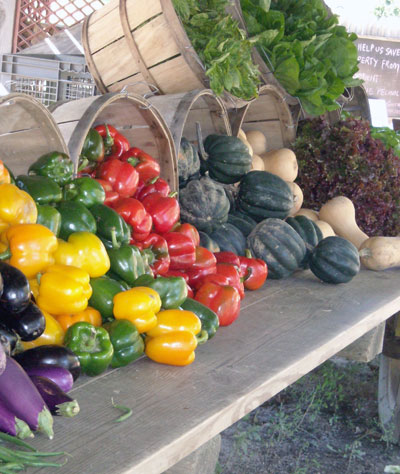

Thanks to the rise of the slow food movement, it may seem like everything at your favorite East End restaurant is fresh from local farms.
But is it really?
For many restaurants — like Almond and Nick & Toni’s — the answer is yes. After decades of being in business on the South Fork, their kitchens and chefs are adept at sourcing locally, calling up Pike Farmstand for early-season tomatoes from the greenhouse or sourcing sunchokes from The Green Thumb for a special artichoke dip.
Other restaurants that local farmers rate include Star Island resorts — owner of Gurney’s and Montauk Yacht Club — Townline BBQ, Art of Eating, Tutto il Giorno and new Water Mill spa Shou Sugi Ban House. Their chefs actively work with local food producers to curate menus based on what’s in season.
While local food from local farms might sound like a marketing ploy to some, for chef Jason Weiner, founder of Almond, it is just good business.
“The idea of having a parameter, a universe of products used based on what people tell me they have, is actually easier,” Mr. Weiner said. “You go on the Baldor website, there is pineapple, kiwis and asparagus.”
Instead, Mr. Weiner receives texts from around nine farmers directly to his phone, telling him about what is coming straight out of the ground. Not only is it easier than navigating a corporate website, but the personal touch — and farmer recommendations — mean that the produce tastes better for customers.
“I do this because I am in business,” Mr. Weiner said. “The main part of my business is putting great food on plates for people.”
Using the example of sweet corn, he explained that as soon as sweet corn is picked, the sugar in the corn begins to turn to starch. Given that Almond is located in the heart of farm country, why would he buy corn that has been sitting in a warehouse in Hunts Point, Bronx, rather than just source locally? “I want to get the corn out of the field that day for my customers,” he said.
For local farms, there are some challenges working with restaurants. Most farms offer their own retail business as well as Community Supported Agriculture, or CSA, program, in addition to wholesaling to restaurants. For both retail and wholesale, some crops are more desirable. Balancing both those demands can be tricky in the summertime, when more farm businesses are bustling.
It is “lots of tomatoes, lots of lettuce,” said Ray Wellen of The Green Thumb. The farm boasts a bustling roadside farm stand — the first on the East End — and CSA program. In order to make sure both the farm stand and CSA boxes are full, The Green Thumb mostly works with restaurants in the fall, winter and summer, selling things like cauliflower, root crops and greenhouse greens to local restaurants.
Another hurdle for farms is weather. While CSAs offer farms the ability to share in risk with their clients, working with restaurants means committing to delivering certain vegetables at certain times, no matter what the outcome.
“You might not have wholesale lettuce because you have a break in your plantings because of something that happened two months ago,” explained Marilee Foster of Foster Farms.
Although there is only so much that a farmer can do about the weather and outsized summer demand, Ms. Foster said that a key component of working with restaurants is having good employees who can think strategically and look a week ahead.
This summer, business is great for Foster Farms but the local housing crisis has Ms. Foster worried, as good staff is critical for the farm-to-restaurant wholesale model. “If there is no place for people to live, that is a problem,” she said.
Now that Foster Farms has expanded into the liquor business — distilling its potatoes into vodkas and whiskey-like products under the label Sagaponacka Vodka — Ms. Foster said that it is even easier for restaurants to offer local products.
“I always say to people you can eat those potato chips and drink that vodka and it comes from potato and they are from the farm down the road,” she said with a chuckle.
While some restaurants are good actors — supporting local farmers and working directly with growers — others are less so. But how is a consumer to tell the difference? According to some, it’s as simple as pulling into the back of a restaurant.
“If you pull into the back of Almond, they always have crates of food from local farms,” Ms. Foster said. “Others that shall remain nameless, when you pull in you see Baldor, and the menu says ‘local, local, local.’”
Another giveaway is if the menu stays the same year round. At restaurants committed to sourcing locally, their menus will change with the season, offering early greens like scapes in the spring and more autumnal vegetables like squash in the fall.
“The heritage of the East End is the agriculture and the fishing and people making a living doing those things,” Mr. Weiner said. “It is nice to be part of that.”
 More Posts from Alexandra Talty
More Posts from Alexandra Talty